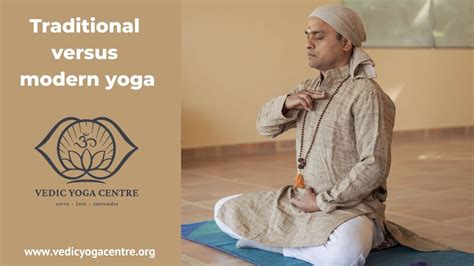Traditional vs. Modern Yoga: A Comparative Analysis of Practices, Philosophies, and Impacts
Yoga, originating from ancient India, has transformed over millennia, evolving from traditional roots into modern interpretations that suit the contemporary world. In this comprehensive exploration, we will compare traditional yoga’s rich, spiritual essence with modern yoga’s practical and fitness-oriented variations, highlighting their differences, intersections, and implications for the future.
Introduction
Yoga has undergone a significant transformation in recent years, shifting from its classical spiritual foundations to modern practices that focus heavily on physical health and fitness. This transition reflects societal changes, commercial demands, and globalized interpretations of wellness. In this analysis, we aim to explore the differences between traditional and modern yoga, examining how each style approaches concepts such as spirituality, practice, goals, and community. We will also investigate the practical implications of each type, presenting a balanced view of their benefits and limitations.
Key Concepts
- Traditional Yoga: Rooted in spiritual development, traditional yoga emphasizes the unity of body, mind, and spirit. Practices often include physical postures (asanas), breathing techniques (pranayama), meditation, and ethical disciplines (yamas and niyamas).
- Modern Yoga: While based on traditional postures, modern yoga often emphasizes fitness, flexibility, and strength. It includes a variety of styles, such as Vinyasa, Hot Yoga, and Power Yoga, each with a focus on physical health and stress reduction.
Definitions
- Asanas: Physical postures used in yoga to improve strength, flexibility, and balance.
- Pranayama: Breathing exercises designed to control life force energy through breath.
- Yamas and Niyamas: Ethical and moral guidelines for living a disciplined and fulfilled life, central to traditional yoga practices.
Historical Context
Traditional yoga traces its origins to ancient texts such as the Vedas, Upanishads, and Patanjali’s Yoga Sutras. Historically, yoga was a holistic practice designed to integrate mind, body, and spirit, with the ultimate goal of achieving moksha or spiritual liberation. Yoga was never just about physical exercises; it encompassed a broad spectrum of practices aimed at spiritual growth and self-realization.
In contrast, modern yoga’s journey began in the early 20th century when Indian yoga masters, such as T. Krishnamacharya and his students, began to popularize yoga in the West. Modern interpretations, influenced by Western fitness trends, focused more on the physical aspects, moving away from the deeper philosophical underpinnings of the ancient practice. Today, modern yoga is often viewed as a tool for physical health, with varying degrees of focus on mental and spiritual well-being.
Current State Analysis
The popularity of yoga worldwide is at an all-time high, with millions of practitioners globally. However, a deep divide exists between traditional practitioners and modern enthusiasts. Traditionalists argue that modern yoga’s focus on physicality strips it of its spiritual depth, while modern practitioners often see traditional yoga as too inaccessible or rigid. Let’s explore the characteristics of each in detail.
| Aspect | Traditional Yoga | Modern Yoga |
|---|---|---|
| Focus | Spiritual growth, mental clarity, and ethical living | Physical health, flexibility, fitness, and relaxation |
| Practice Structure | Holistic, including postures, breathwork, and meditation | Primarily focused on physical postures (asanas) |
| Approach to Philosophy | Deeply rooted in ancient Indian philosophies | Often de-emphasized or absent in practice |
| Accessibility | More challenging for beginners, heavy on philosophy | Widely accessible, simplified for mass appeal |
| Teacher Training | Requires years of dedicated study under a guru | Standardized, often certified in months |
Practical Applications
Traditional yoga, with its emphasis on holistic well-being, is often seen as a lifelong commitment. Practitioners spend years mastering the eight limbs of yoga, moving toward spiritual liberation. Its deep meditative practices make it suitable for those looking for inner peace, ethical growth, and mental resilience.
Modern yoga, on the other hand, is more immediately accessible, with benefits such as improved physical health, stress relief, and enhanced flexibility available from the first session. It is a versatile practice, adaptable to various fitness levels and goals, making it ideal for those seeking physical improvements or stress management in a busy lifestyle.
Case Studies
Consider the example of Ashok, a 45-year-old businessman who adopted traditional yoga after dealing with anxiety. Over the course of two years, he not only improved his mental health but also experienced a profound transformation in his outlook on life, adopting more ethical and mindful living practices.
Contrast this with Sarah, a 28-year-old marketing executive who practices Vinyasa yoga daily. She uses yoga primarily for fitness and stress relief, finding that it helps her maintain focus and flexibility amid her demanding work schedule. Though she has only touched on meditation and philosophy, the physical benefits keep her consistent in her practice.
Stakeholder Analysis
The divide between traditional and modern yoga often comes down to different stakeholders. Traditional yoga advocates, including gurus and spiritual leaders, emphasize the practice’s ethical, spiritual, and philosophical roots. Modern yoga stakeholders, such as yoga studios, fitness influencers, and health professionals, often prioritize accessibility, fitness, and mental health. This distinction can create tension between preserving the essence of yoga and making it widely accessible to the masses.
Implementation Guidelines
If you’re seeking a more spiritual, holistic practice, traditional yoga might be the way forward. It requires dedication, patience, and a willingness to explore deeper philosophical and meditative practices. Start with basic poses, but prioritize learning from experienced teachers who emphasize all eight limbs of yoga.
For those looking for a practical, fitness-oriented practice, modern yoga offers a quick way to get into better shape and manage stress. Look for local classes, whether it’s Vinyasa or Power Yoga, to start building a routine. Most studios offer beginner classes that focus on physical postures without diving into the more complex spiritual aspects.
Ethical Considerations
The commercialization of yoga raises several ethical issues, especially regarding cultural appropriation. Traditionalists often argue that modern yoga distorts sacred practices for profit, stripping away their deeper meaning. Practitioners and instructors must be mindful of the historical and cultural significance of yoga, ensuring respect and acknowledgment of its roots.
Moreover, there’s a growing concern about the accessibility of yoga in modern times, as it becomes increasingly marketed to affluent demographics, leaving behind communities that could benefit from its mental and physical health advantages.
Limitations and Future Research
One major limitation of both traditional and modern yoga is the lack of scientific research that clearly delineates the long-term effects of each approach. While some studies focus on yoga’s mental and physical health benefits, fewer explore the differences between traditional and modern practices. Future research could explore the following areas:
- The mental health benefits of traditional versus modern yoga practices
- The role of yoga in promoting ethical living and social change
- How yoga can be adapted to serve underprivileged communities more effectively
- The impact of modern yoga’s commercialization on its accessibility and integrity
Expert Commentary
Experts in the field of yoga offer a range of perspectives on the debate between traditional and modern practices. According to Dr. Amanda Leeds, a researcher in mind-body medicine, “Modern yoga provides accessible health benefits, but it often neglects the spiritual and ethical dimensions that give traditional yoga its depth.”
On the other hand, Swami Paramandaji, a renowned yoga guru, emphasizes that “Yoga without philosophy is like a body without a soul. To truly benefit from yoga, one must embrace all its dimensions, not just the physical.”
In conclusion, both traditional and modern yoga have significant value, depending on an individual’s goals and needs. While modern yoga excels in making yoga accessible to the masses, traditional yoga offers a more profound, spiritual experience that fosters holistic growth.








